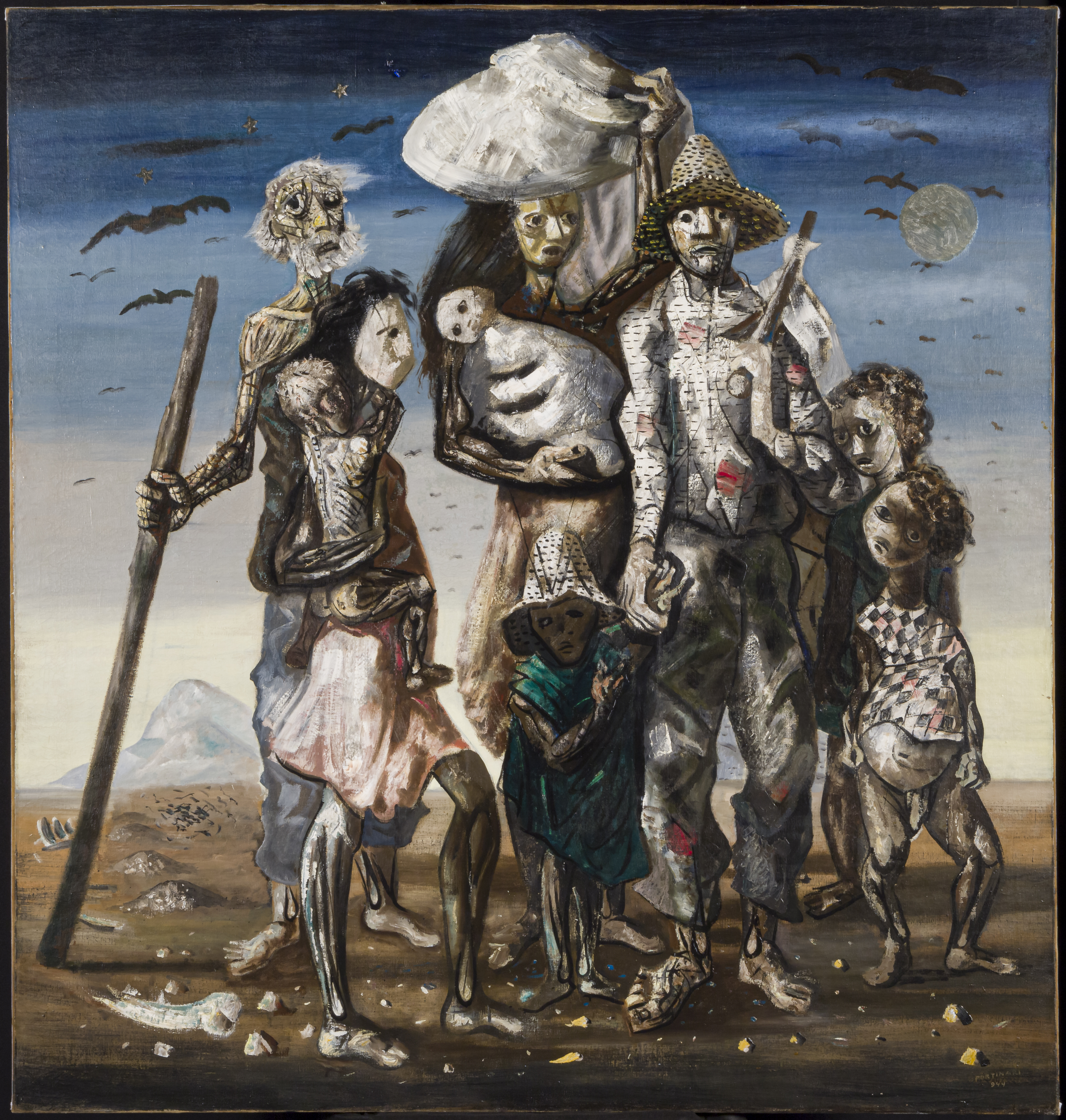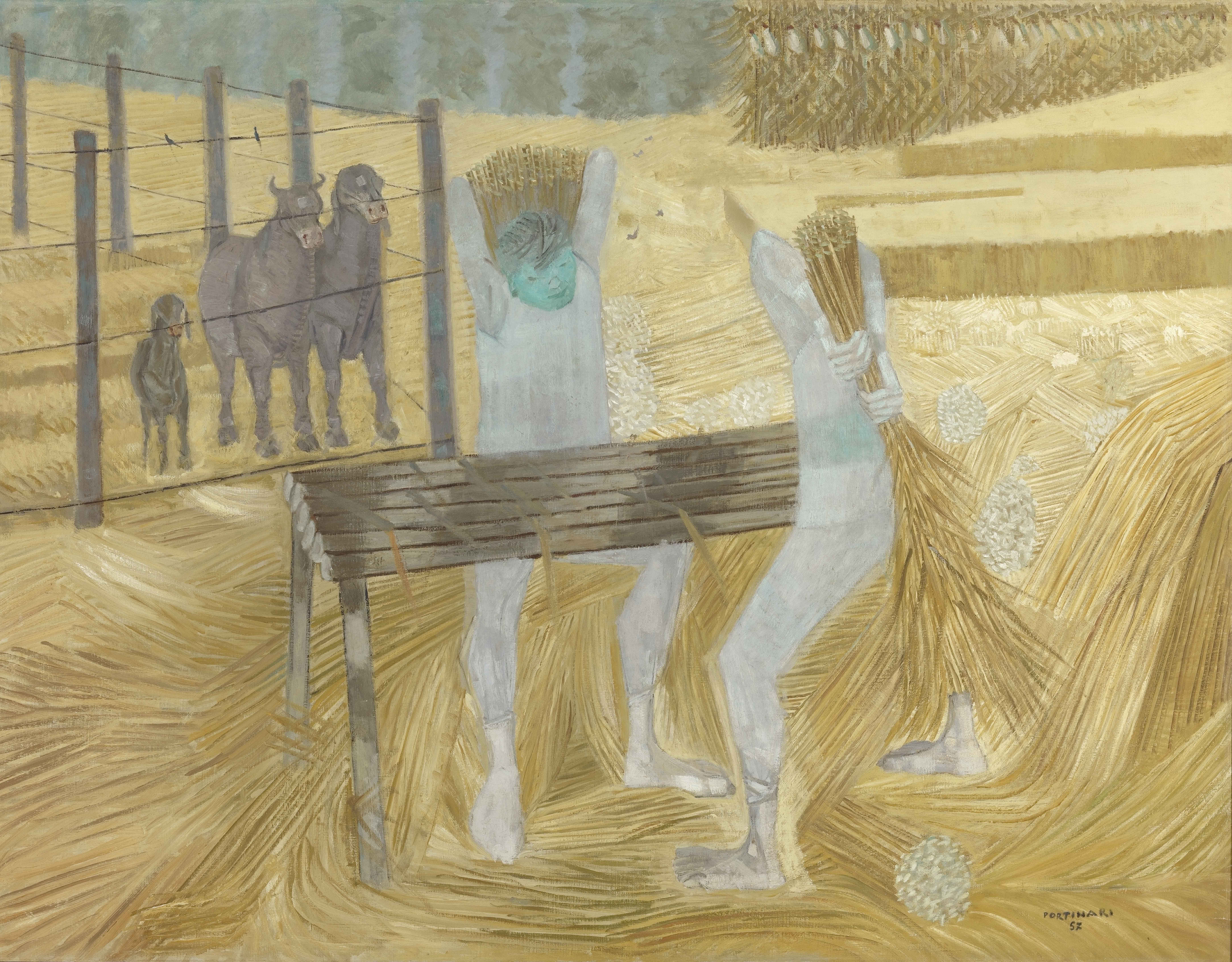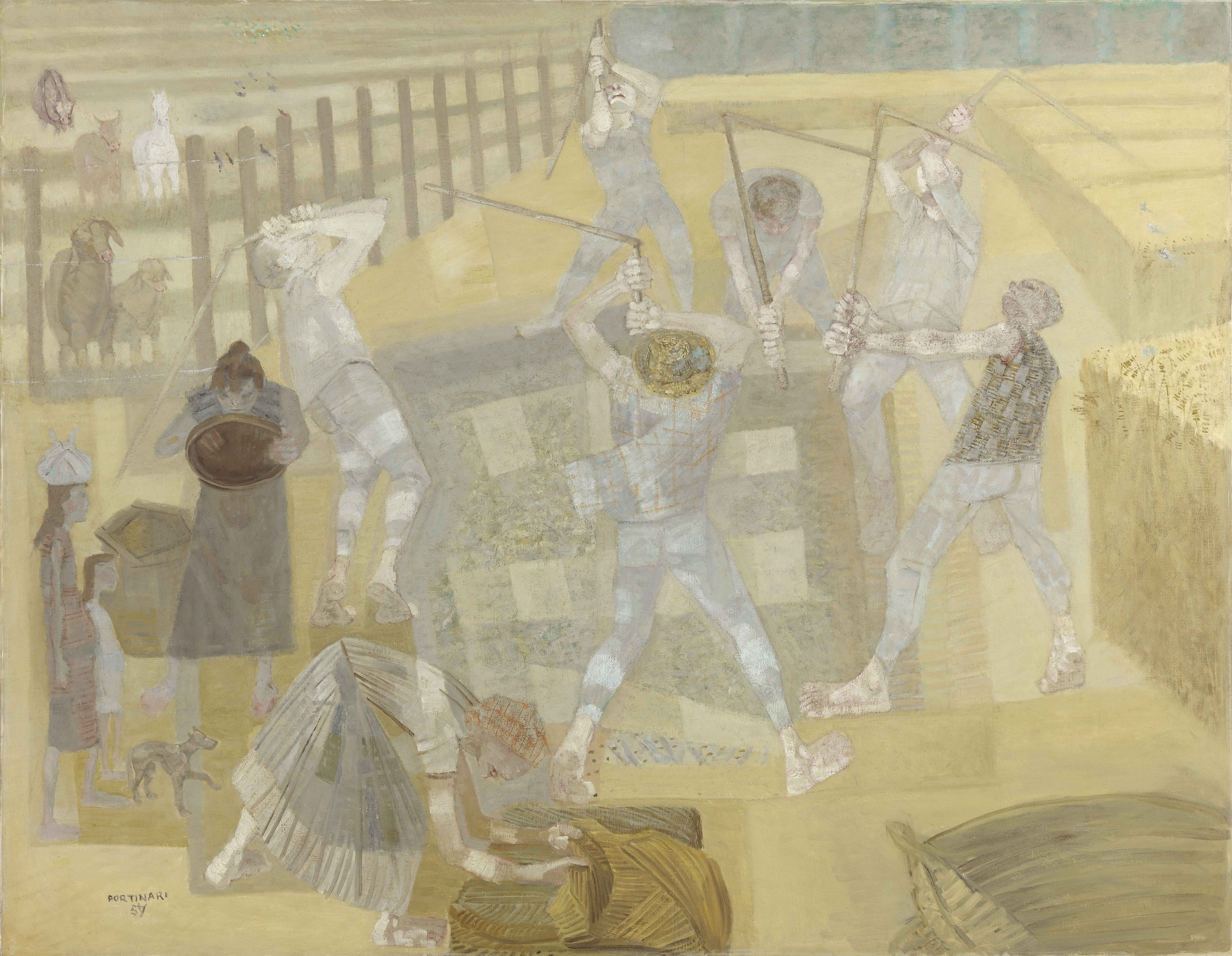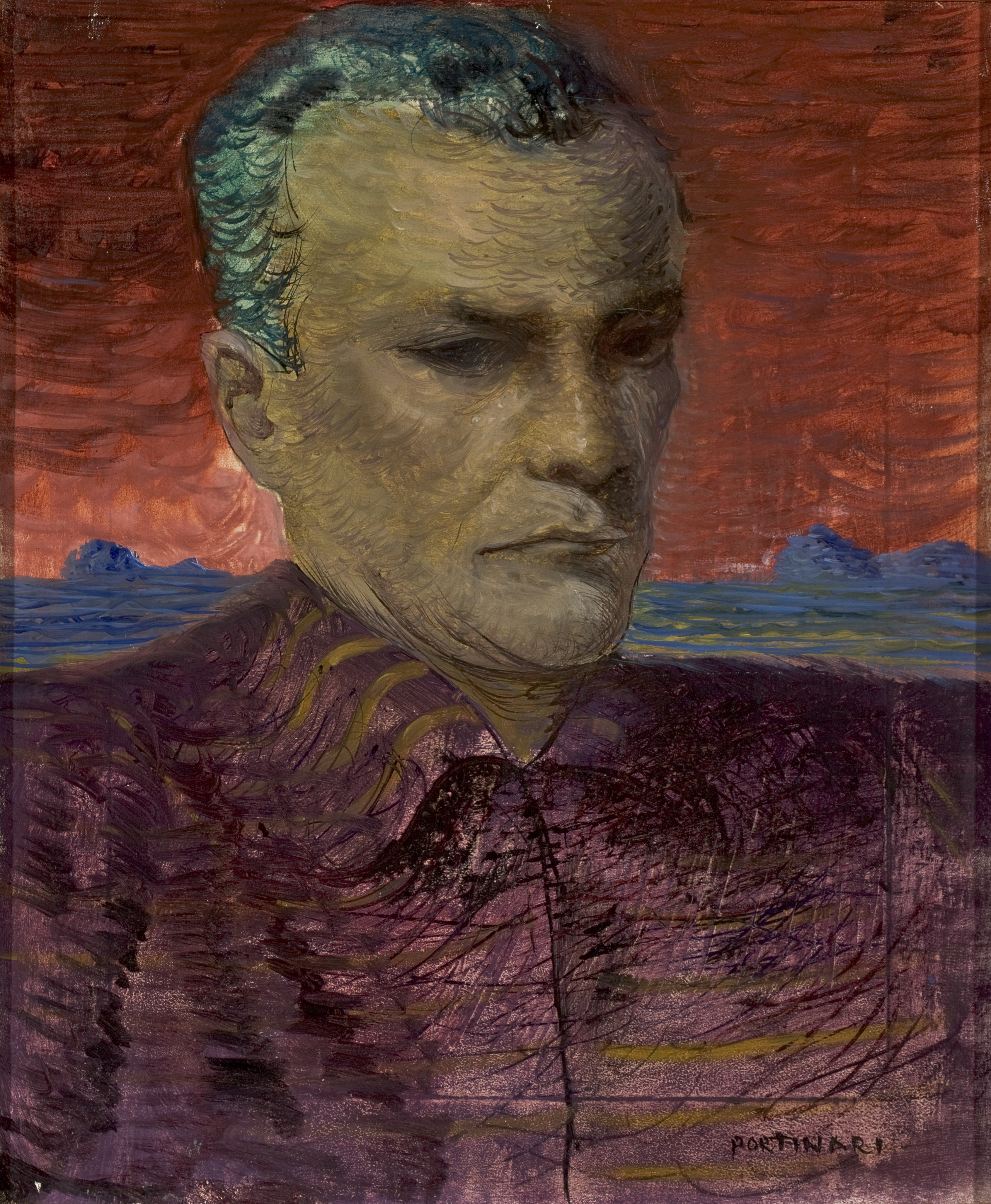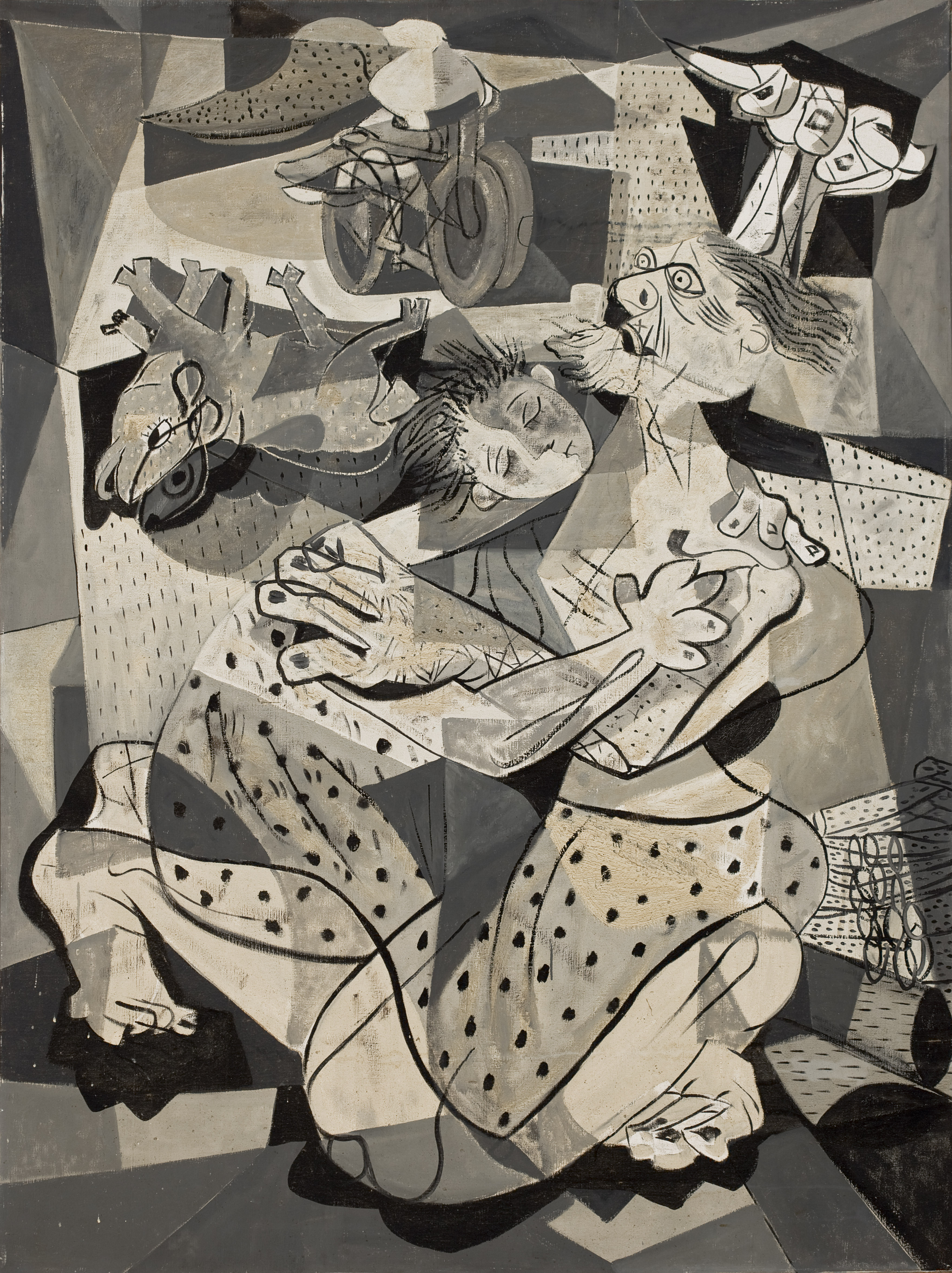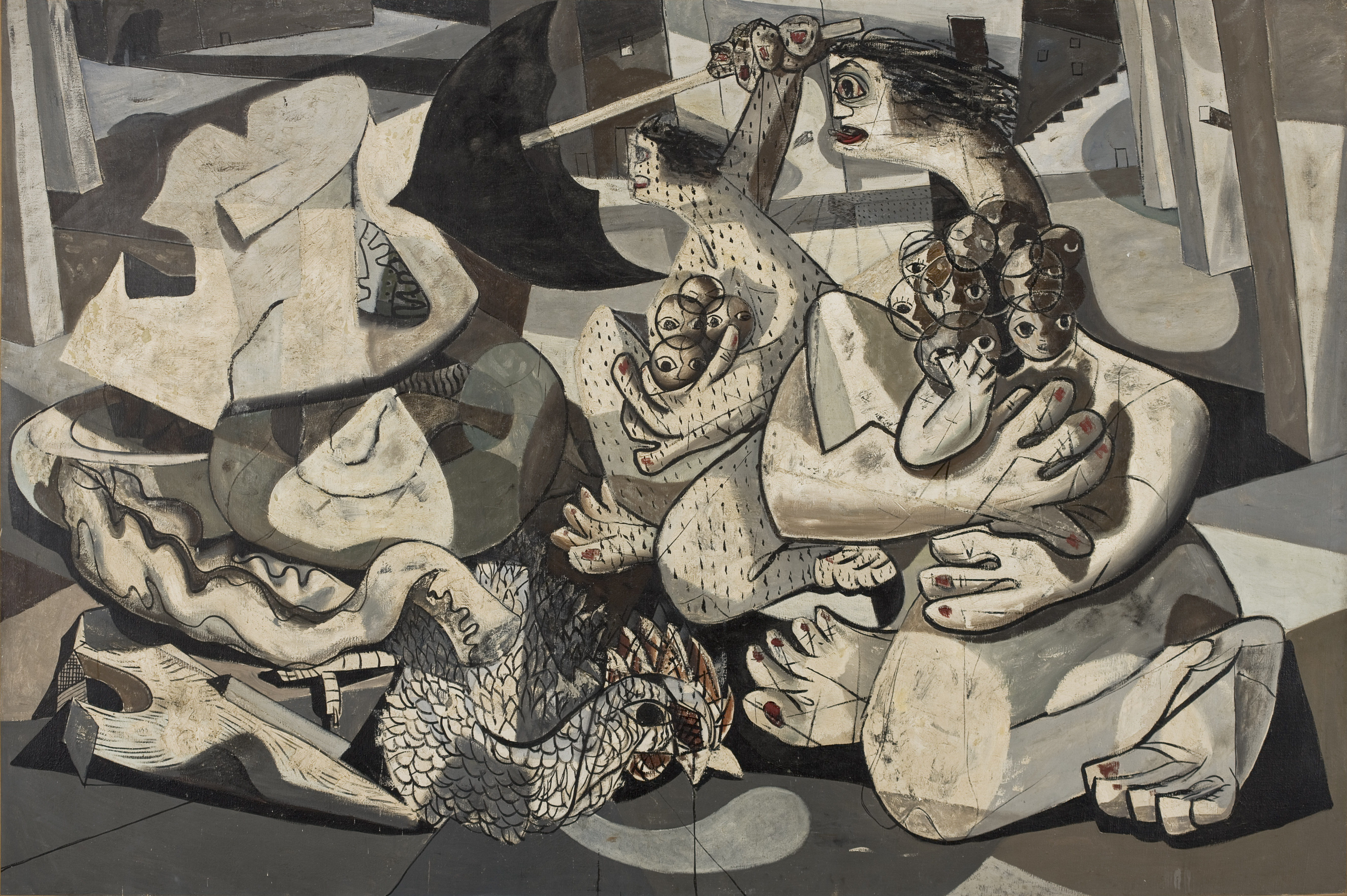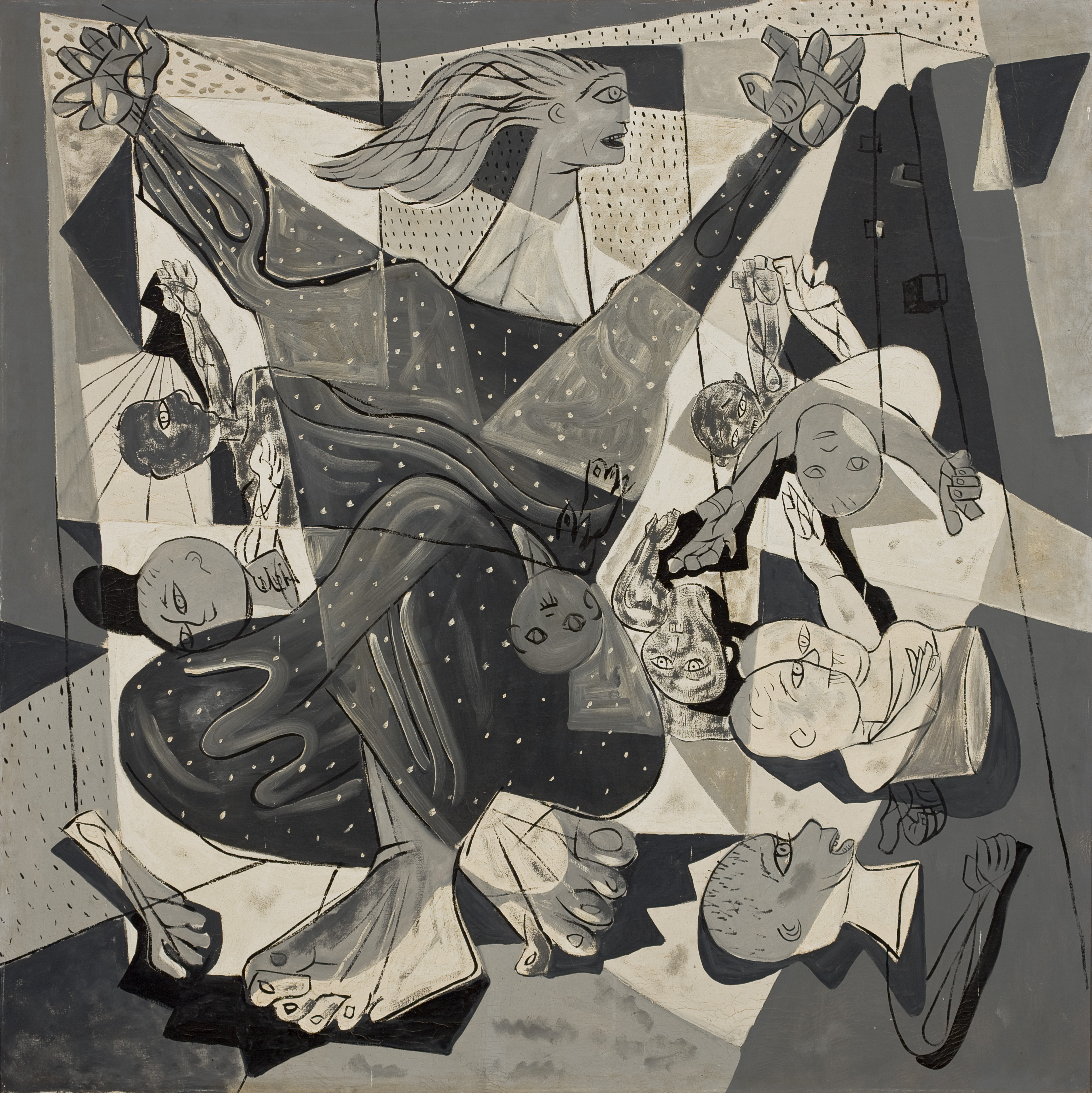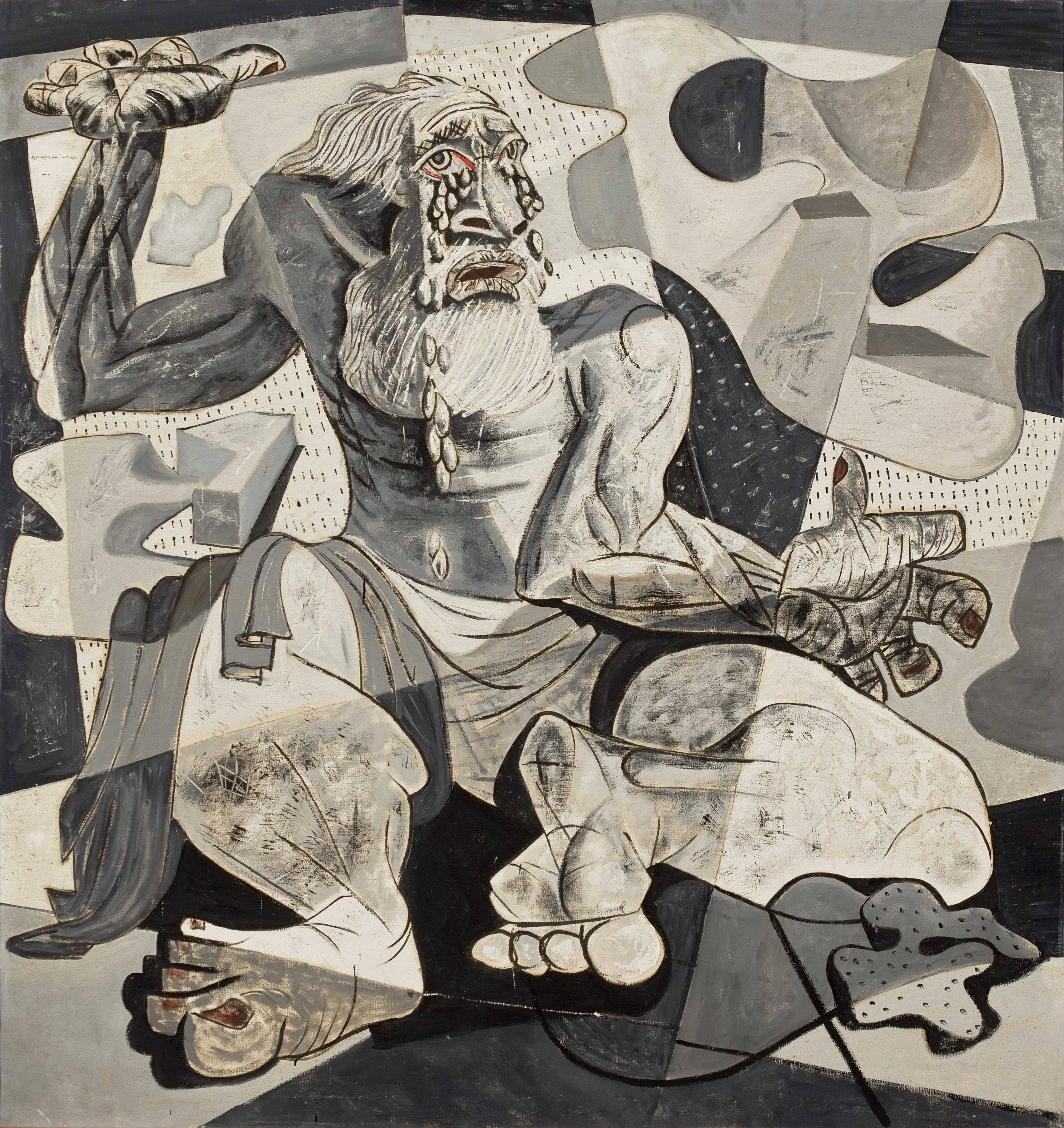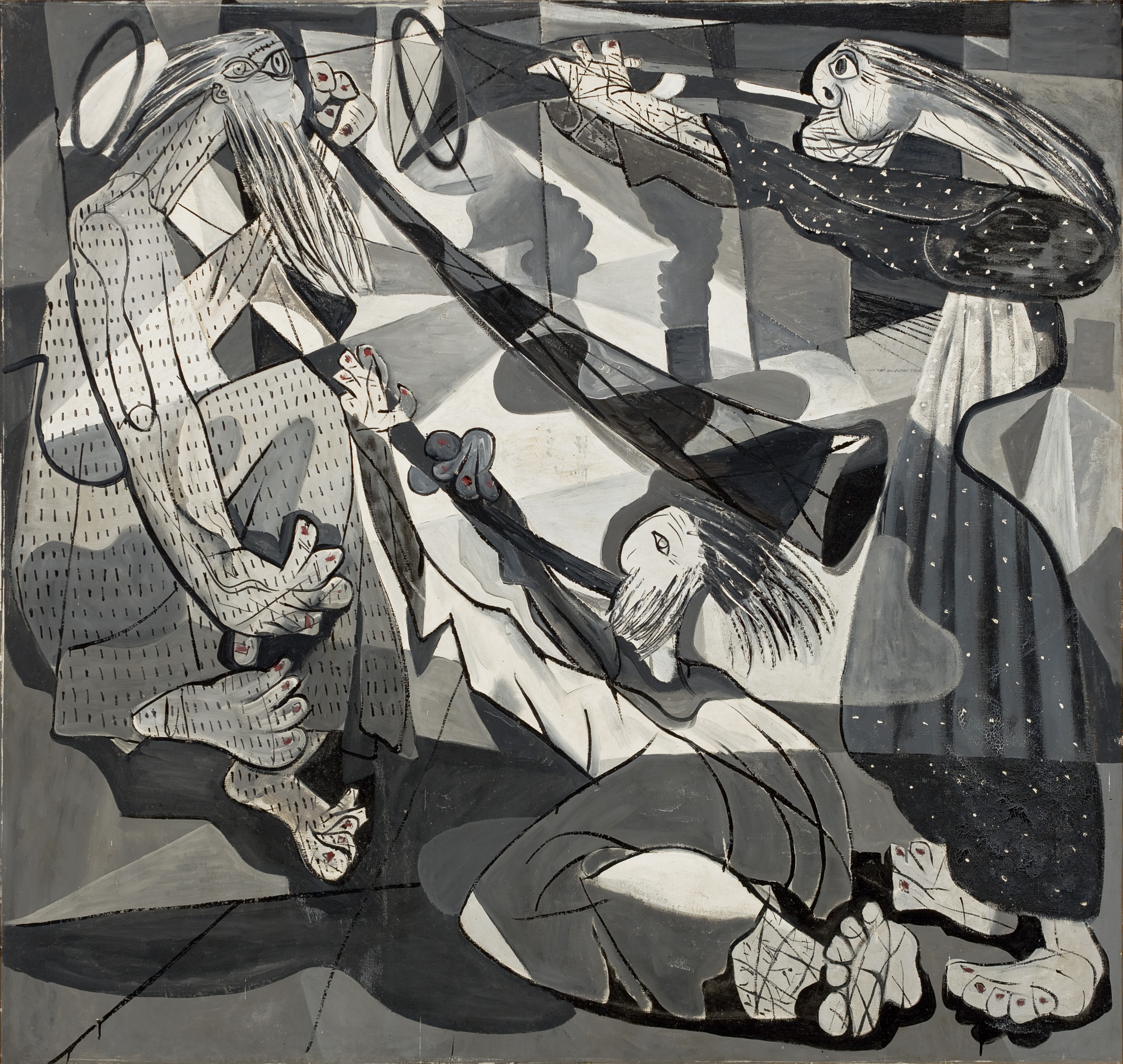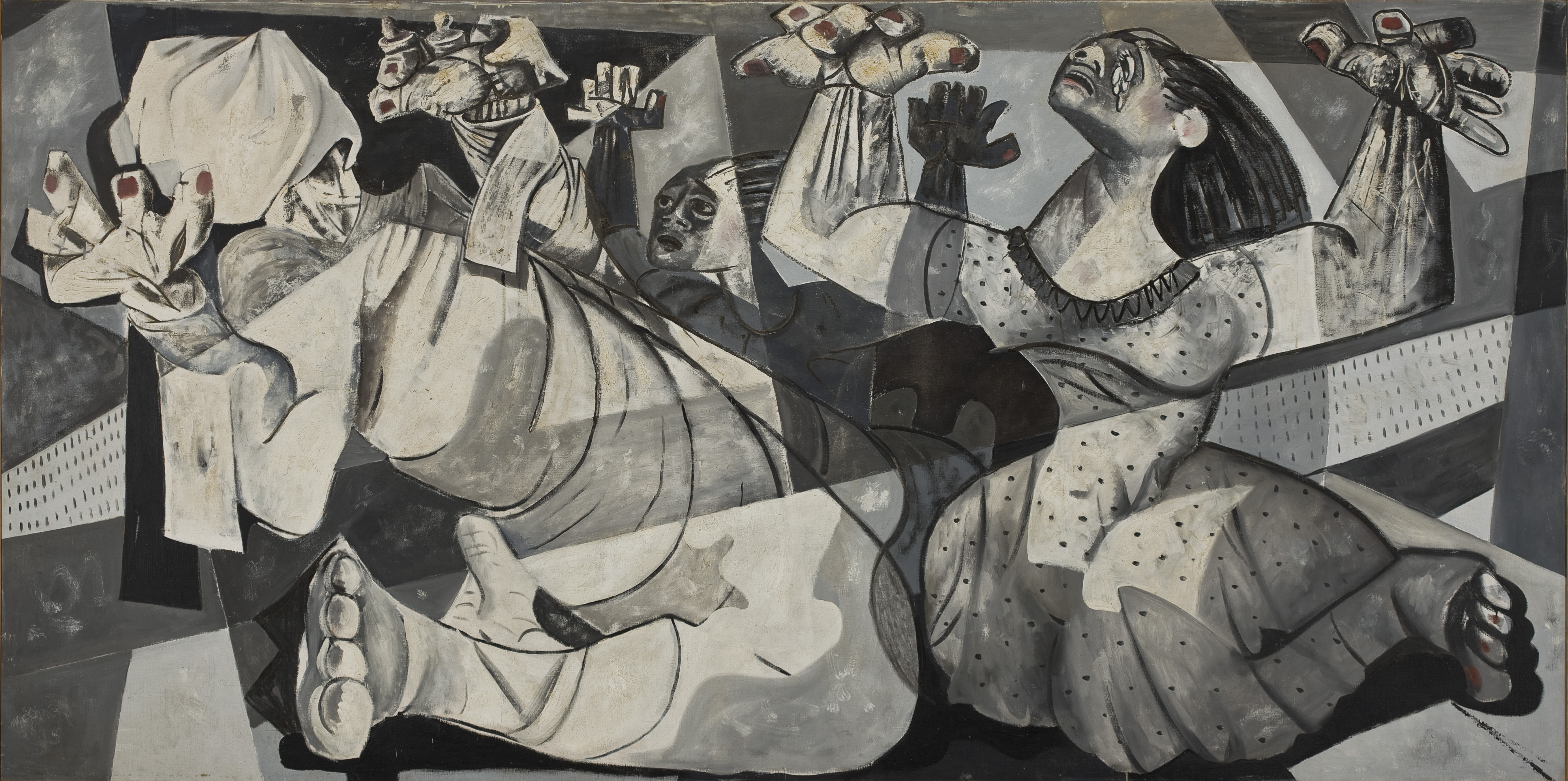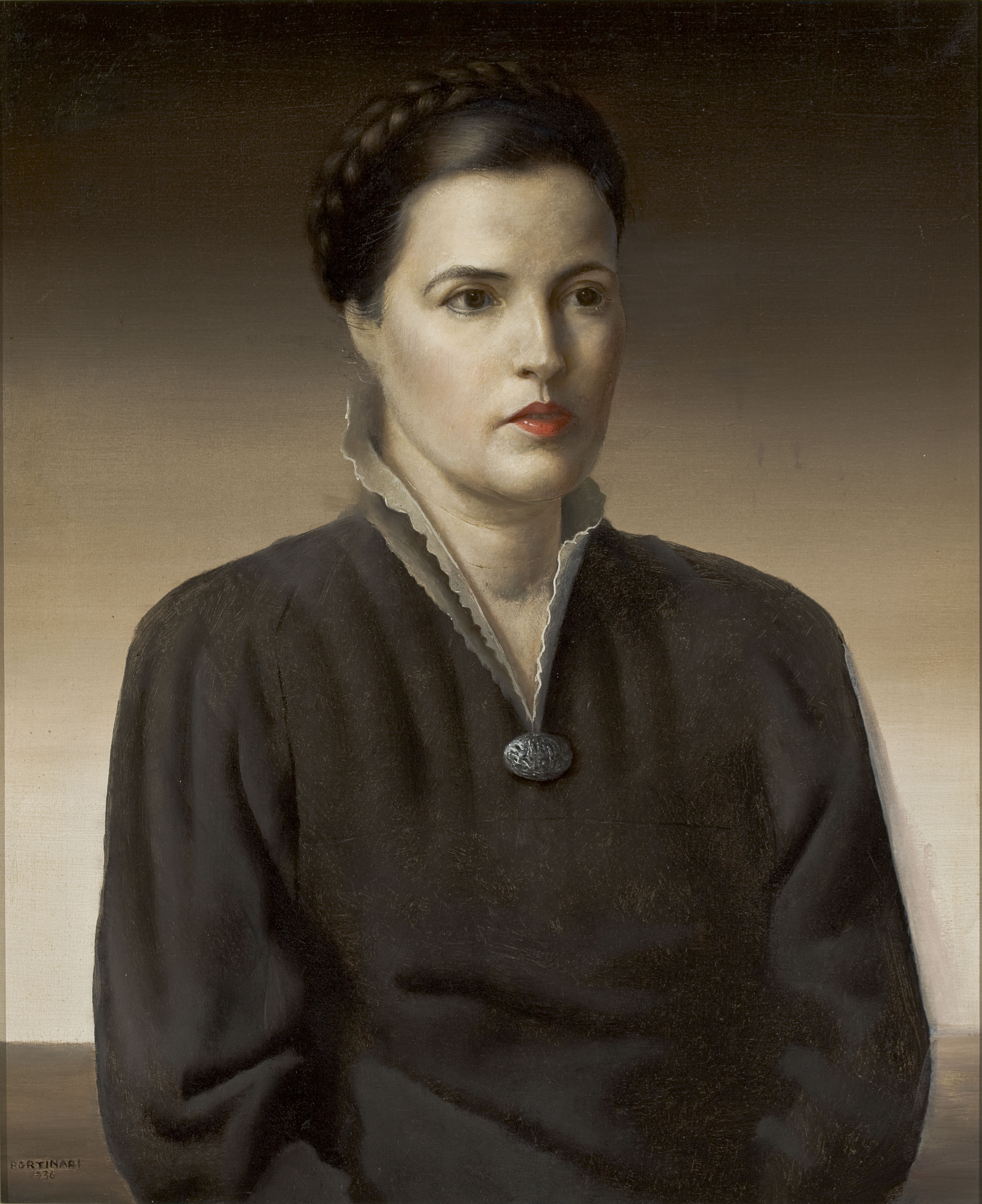Candido Portinari
Northeastern Migrants, from the Migrant Series, 1944-1945, 1944
Author:
Candido PortinariBio:
Brodowski, São Paulo, Brasil, 1903-Rio de Janeiro, Brasil ,1962Title:
Northeastern Migrants, from the Migrant Series, 1944-1945Date:
1944Medium:
Óleo sobre telaDimensions:
190 x 180 x 2,5 cmCredit line:
Doação Assis Chateaubriand, 1948Object type:
PinturaInventory number:
MASP.00324Photography credits:
Pedro Campos/ Elizabeth Kajiya/ Marcia Rizzuto (IFUSP)
Portinari made the panels War and Peace (1952–1956), at the United Nations headquarters in New York, as well as the panels for the building of the Ministry of Education and Public Health in Rio de Janeiro (1936–1938). In the mid-1940s, when the political debate was intensifying and Brazilian workers were gaining more rights, Portinari was engaged in politics, running as a candidate for federal deputy and senator for the Communist Party of Brazil. In the field of art, his work epitomizes the contrasts that mark Brazilian culture: on the one hand, he portrayed the dominant elite, while on the other, he painted the working class in a style that finds an echo in Latin America modern art. The painting Retirantes (1944) is part of the series of the same name, focused on migrants fleeing from drought-stricken lands, inscribing their suffering in the memory of Brazilian modern art. As in literary works from that period, such as Vidas secas [Barren Lives] (1938), by Graciliano Ramos (1892–1953), the characters seem to lose their humanity and to mix with the hard and violent nature. In the painting, the faces have the same shape and size as the Moon; the bones and the reliefs of the body resemble stones. The bags and the babies weigh on the adults, while the face and limbs of the child dressed in green are coming apart. The family of migrants is walking shoeless and all in a bunch, pursued by vultures.
— MASP Curatorial Team
Between 1944 and 1945, Portinari created a five-canvas series nearly as an offshoot of his Religious Series. When shown in Paris, in 1946, the paintings Dead Child, Dead Child, Migrants, Northeastern Migrants, and Burial in a Hammock were met with a praiseful review by Germain Bazin. At present three of these works are conserved in the Masp Collection, and a version of Dead Child, in the Musée d’Art Moderne, of Paris. Although less daring than the Religious Series, the series in question brings opposing formal solutions spanning from an intimate dialogue with Siqueiros in Burial in a Hammock, to personal solutions as in Dead Child, the series’s masterpiece, in which the child figure features the ultimate expressiveness of Cosme Tura.
— Unknown authorship, 1998
